formerly eScholarship Editions


|
|
|
|
Your search for India in text, title, author, description
Public
in rights found 387 book(s). | Modify Search | Displaying 1 - 20 of 387 book(s) | |
| 1. | 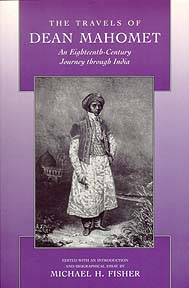 | Title: The travels of Dean Mahomet: an eighteenth-Century journey through India Author: Mahomet, Sake Deen 1759-1851 Published: University of California Press, 1997 Subjects: History | Asian History | South Asia | Travel | Autobiographies and Biographies Publisher's Description: This unusual study combines two books in one: the 1794 autobiographical travel narrative of an Indian, Dean Mahomet, recalling his years as camp-follower, servant, and subaltern officer in the East India Company's army (1769 to 1784); and Michael H. Fisher's portrayal of Mahomet's sojourn as an insider/outsider in India, Ireland, and England. Emigrating to Britain and living there for over half a century, Mahomet started what was probably the first Indian restaurant in England and then enjoyed a distinguished career as a practitioner of "oriental" medicine, i.e., therapeutic massage and herbal steam bath, in London and the seaside resort of Brighton. This is a fascinating account of life in late eighteenth-century India - the first book written in English by an Indian - framed by a mini-biography of a remarkably versatile entrepreneur. Travels presents an Indian's view of the British conquest of India and conveys the vital role taken by Indians in the colonial process, especially as they negotiated relations with Britons both in the colonial periphery and the imperial metropole.Connoisseurs of unusual travel narratives, historians of England, Ireland, and British India, as well as literary scholars of autobiography and colonial discourse will find much in this book. But it also offers an engaging biography of a resourceful, multidimensional individual. [brief] Matches in book (241): ...An Eighteenth-Century Journey Through India... Similar Items...The European East India Companies... ...The World of Eighteenth-Century India... |
| 2. | 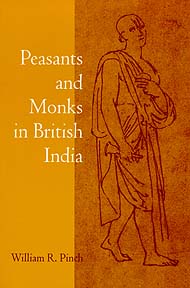 | Title: Peasants and monks in British India Author: Pinch, William R 1960- Published: University of California Press, 1996 Subjects: History | Asian History | South Asia | Postcolonial Studies | Hinduism Publisher's Description: In this compelling social history, William R. Pinch tackles one of the most important but most neglected fields of the colonial history of India: the relation between monasticism and caste. The highly original inquiry yields rich insights into the central structure and dynamics of Hindu society - insights that are not only of scholarly but also of great political significance.Perhaps no two images are more associated with rural India than the peasant who labors in an oppressive, inflexible social structure and the ascetic monk who denounces worldly concerns. Pinch argues that, contrary to these stereotypes, North India's monks and peasants have not been passive observers of history; they have often been engaged with questions of identity, status, and hierarchy - particularly during the British period. Pinch's work is especially concerned with the ways each group manipulated the rhetoric of religious devotion and caste to further its own agenda for social reform. Although their aims may have been quite different - Ramanandi monastics worked for social equity, while peasants agitated for higher social status - the strategies employed by these two communities shaped the popular political culture of Gangetic north India during and after the struggle for independence from the British. [brief] Matches in book (420): Similar Items |
| 3. | 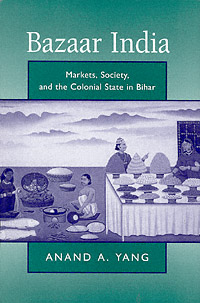 | Title: Bazaar India: markets, society, and the colonial state in Gangetic Bihar Author: Yang, Anand A Published: University of California Press, 1999 Subjects: Asian Studies | South Asia | Asian History | Economics and Business Publisher's Description: The role of markets in linking local communities to larger networks of commerce, culture, and political power is the central element in Anand A. Yang's provocative and original study. Yang uses bazaars in the northeast Indian state of Bihar during the colonial period as the site of his investigation. The bazaar provides a distinctive locale for posing fundamental questions regarding indigenous societies under colonialism and for highlighting less familiar aspects of colonial India.At one level, Yang reconstructs Bihar's marketing system, from its central place in the city of Patna down to the lowest rung of the periodic markets. But he also concentrates on the dynamics of exchanges and negotiations between different groups and on what can be learned through the "voices" of people in the bazaar: landholders, peasants, traders, and merchants. Along the way, Yang uncovers a wealth of details on the functioning of rural trade, markets, fairs, and pilgrimages in Bihar.A key contribution of Bazaar India is its many-stranded narrative history of some of South Asia's primary actors over the past two centuries. But Yang's approach is not that of a detached observer; rather, his own voice is engaged with the voices of the past and with present-day historians. By focusing on the world beyond the mud walls of the village, he widens the imaginative geography of South Asian history. Readers with an interest in markets, social history, culture, colonialism, British India, and historiographic methods will welcome his book. [brief] Matches in book (366): Similar Items |
| 4. | 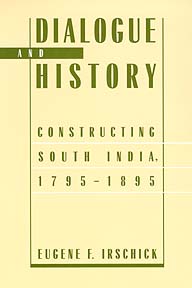 | Title: Dialogue and history: constructing South India, 1795-1895 Author: Irschick, Eugene F Published: University of California Press, 1994 Subjects: History | Asian History | South Asia | Cultural Anthropology Publisher's Description: Eugene Irschick deftly questions the conventional wisdom that knowledge about a colonial culture is unilaterally defined by its rulers. Focusing on nineteenth-century South India, he demonstrates that a society's view of its history results from a "dialogic process" involving all its constituencies.For centuries, agricultural life in South India was semi-nomadic. But when the British took dominion, they sought to stabilize the region by inventing a Tamil "golden age" of sedentary, prosperous villages. Irschick shows that this construction resulted not from overt British manipulation but from an intricate cross-pollination of both European and native ideas. He argues that the Tamil played a critical role in constructing their past and thus shaping their future. And British administrators adapted local customs to their own uses. [brief] Matches in book (247): ...Constructing South India, 1795–1895... Similar Items...Did the British Pauperize India?... ...India Office Library and Records, London... |
| 5. | 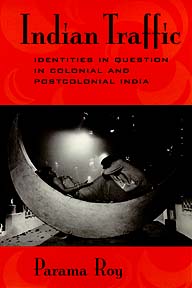 | Title: Indian traffic: identities in question in colonial and postcolonial India Author: Roy, Parama Published: University of California Press, 1998 Subjects: Postcolonial Studies | Literary Theory and Criticism | South Asia | Gender Studies Publisher's Description: The continual, unpredictable, and often violent "traffic" between identities in colonial and postcolonial India is the focus of Parama Roy's stimulating and original book. Mimicry has been commonly recognized as an important colonial model of bourgeois/elite subject formation, and Roy examines its place in the exchanges between South Asian and British, Hindu and Muslim, female and male, and subaltern and elite actors. Roy draws on a variety of sources - religious texts, novels, travelogues, colonial archival documents, and films - making her book genuinely interdisciplinary. She explores the ways in which questions of originality and impersonation function, not just for "western" or "westernized" subjects, but across a range of identities. For example, Roy considers the Englishman's fascination with "going native," an Irishwoman's assumption of Hindu feminine celibacy, Gandhi's impersonation of femininity, and a Muslim actress's emulation of a Hindu/Indian mother goddess. Familiar works by Richard Burton and Kipling are given fresh treatment, as are topics such as the "muscular Hinduism" of Swami Vivekananda. Indian Traffic demonstrates that questions of originality and impersonation are in the forefront of both the colonial and the nationalist discourses of South Asia and are central to the conceptual identity of South Asian postcolonial theory itself. [brief] Matches in book (481): ...Identities in Question in Colonial and Postcolonial India... Similar Items...Discovering India, Imagining Thuggee... ...Figuring Mother India... |
| 6. | 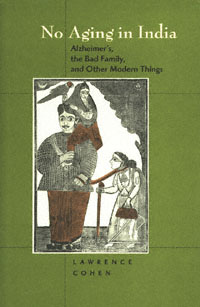 | Title: No aging in India: Alzheimer's, the bad family, and other modern things Author: Cohen, Lawrence 1961- Published: University of California Press, 1998 Subjects: Anthropology | Medical Anthropology | Aging | South Asia Publisher's Description: From the opening sequence, in which mid-nineteenth-century Indian fishermen hear the possibility of redemption in an old woman's madness, No Aging in India captures the reader with its interplay of story and analysis. Drawing on more than a decade of ethnographic work, Lawrence Cohen links a detailed investigation of mind and body in old age in four neighborhoods of the Indian city of Varanasi (Banaras) with events and processes around India and around the world. This compelling exploration of senility - encompassing not only the aging body but also larger cultural anxieties - combines insights from medical anthropology, psychoanalysis, and postcolonial studies. Bridging literary genres as well as geographic spaces, Cohen responds to what he sees as the impoverishment of both North American and Indian gerontologies - the one mired in ambivalence toward demented old bodies, the other insistent on a dubious morality tale of modern families breaking up and abandoning their elderly. He shifts our attention irresistibly toward how old age comes to matter in the constitution of societies and their narratives of identity and history. [brief] Matches in book (410): Similar Items |
| 7. | 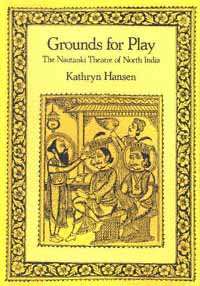 | Title: Grounds for play: the Nauṭaṅkī theatre of North India Author: Hansen, Kathryn Published: University of California Press, 1991 Subjects: Literature | Cultural Anthropology | South Asia Publisher's Description: The nautanki performances of northern India entertain their audiences with often ribald and profane stories. Rooted in the peasant society of pre-modern India, this theater vibrates with lively dancing, pulsating drumbeats, and full-throated singing. In Grounds for Play , Kathryn Hansen draws on field research to describe the different elements of nautanki performance: music, dance, poetry, popular story lines, and written texts. She traces the social history of the form and explores the play of meanings within nautanki narratives, focusing on the ways important social issues such as political authority, community identity, and gender differences are represented in these narratives.Unlike other styles of Indian theater, the nautanki does not draw on the pan-Indian religious epics such as the Ramayana or the Mahabharata for its subjects. Indeed, their storylines tend to center on the vicissitudes of stranded heroines in the throes of melodramatic romance. Whereas nautanki performers were once much in demand, live performances now are rare and nautanki increasingly reaches its audiences through electronic media - records, cassettes, films, television. In spite of this change, the theater form still functions as an effective conduit in the cultural flow that connects urban centers and the hinterland in an ongoing process of exchange. [brief] Matches in book (388): ...The Nautanki Theatre of North India... Similar Items...collected during my fieldwork in India. 25. Peter Manuel, Popular Music of the... ...Harish-chandra in all the provinces of India was largely due to Parsi effort in... |
| 8. | 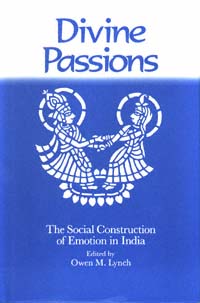 | Title: Divine passions: the social construction of emotion in India Author: Lynch, Owen M 1931- Published: University of California Press, 1990 Subjects: Anthropology | South Asia | History Publisher's Description: Naked holy men denying sexuality and feeling; elderly people basking in the warmth and security provided by devoted and attentive family members; fastidious priests concerned solely with rules of purity and minutiae of ritual practice; puritanical moralists concealing women and sexuality behind purdah's veils - these are familiar Western stereotypes of India. The essays in Divine Passions , however, paint other, more colorful and emotionally alive pictures of India: ecstatic religious devotees rolling in temple dust; gray-haired elders worrying about neglect and mistreatment by family members; priests pursuing a lusty, carefree ideal of the good life; and jokers reviling one another with bawdy, sexual insults at marriages.Drawing on rich ethnographic data from emotion-charged scenarios, these essays question Western academic theories of emotion, particularly those that reduce emotions to physiological sensations or to an individual's private feelings. Presenting an alternative view of emotions as culturally constructed and morally evaluative concepts grounded in the bodily self, the contributors to Divine Passions help dispel some of the West's persistent misconceptions of Indian emotional experience. Moreover, the edition as a whole argues for a new and different understanding of India based on field research and an understanding of the devotional (bhakti) tradition. [brief] Matches in book (206): ...The Social Construction of Emotion in India... Similar Items...One The Social Construction of Emotion in India... ...One The Social Construction of Emotion in India... |
| 9. | 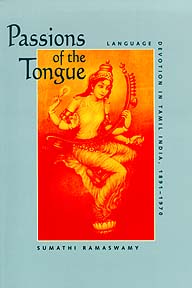 | Title: Passions of the tongue: language devotion in Tamil India, 1891-1970 Author: Ramaswamy, Sumathi Published: University of California Press, 1997 Subjects: Asian Studies | History | South Asia | Language and Linguistics | Asian History | Asian Literature Publisher's Description: Why would love for their language lead several men in southern India to burn themselves alive in its name? Passions of the Tongue analyzes the discourses of love, labor, and life that transformed Tamil into an object of such passionate attachment, producing in the process one of modern India's most intense movements for linguistic revival and separatism. Sumathi Ramaswamy suggests that these discourses cannot be contained within a singular metanarrative of linguistic nationalism and instead proposes a new analytic, "language devotion." She uses this concept to track the many ways in which Tamil was imagined by its speakers and connects these multiple imaginings to their experience of colonial and post-colonial modernity. Focusing in particular on the transformation of the language into a goddess, mother, and maiden, Ramaswamy explores the pious, filial, and erotic aspects of Tamil devotion. She considers why, as its speakers sought political and social empowerment, metaphors of motherhood eventually came to dominate representations of the language. [brief] Matches in book (265): ...Language Devotion in Tamil India, 1891–1970... Similar Items...Dravidianism and India... ...new bourgeois codes of morality that were put in place in colonial South India.... |
| 10. | 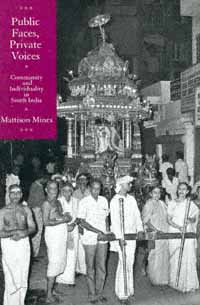 | Title: Public faces, private voices: community and individuality in South India Author: Mines, Mattison 1941- Published: University of California Press, 1994 Subjects: Anthropology | Cultural Anthropology | South Asia Publisher's Description: Individuality is often viewed as an exclusively Western value. In non-Western societies, collective identities seem to eclipse those of individuals. These generalities, however, have overlooked the importance of personal uniqueness, volition, and achievement in these cultures. As an anthropologist in Tamil Nadu, South India, Mattison Mines found private and public expressions of self in all sectors of society. Based on his twenty-five years of field research, Public Faces, Private Voices weaves together personal life stories, historical description, and theoretical analysis to define individuality in South Asia and to distinguish it from its Western counterpart.This engaging and controversial book will be of great interest to scholars and students working in anthropology, psychology, sociology, South Asian history, urban studies, and political science. [brief] Matches in book (153): ...Community and Individuality in South India... Similar Items...Chapter One Introduction Individuality in South India... ...Chapter One Introduction Individuality in South India... |
| 11. | 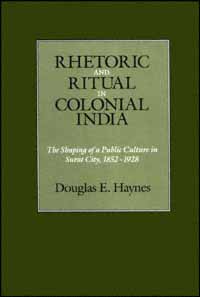 | Title: Rhetoric and ritual in colonial India: the shaping of a public culture in Surat City, 1852-1928 Author: Haynes, Douglas E Published: University of California Press, 1991 Subjects: History | Asian History | South Asia | Cultural Anthropology Publisher's Description: This book explores the rhetoric and ritual of Indian elites undercolonialism, focusing on the city of Surat in the Bombay Presidency. It particularly examines how local elites appropriated and modified the liberal representative discourse of Britain and thus fashioned a "public' culture that excluded the city's underclasses. Departing from traditional explanations that have seen this process as resulting from English education or radical transformations in society, Haynes emphasizes the importance of the unequal power relationship between the British and those Indians who struggled for political influence and justice within the colonial framework. A major contribution of the book is Haynes' analysis of the emergence and ultimate failure of Ghandian cultural meanings in Indian politics after 1923.The book addresses issues of importance to historians and anthropologists of India, to political scientists seeking to understand the origins of democracy in the "Third World," and general readers interested in comprehending processes of cultural change in colonial contexts. [brief] Matches in book (366): ...Rhetoric and Ritual in Colonial India... Similar Items...India Office Library, London... ...Urban Development; and C. A. Bayly, "Town-Building in North India, 1790-1830."... |
| 12. | 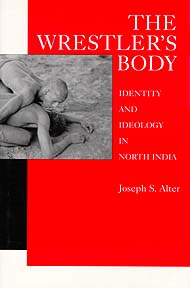 | Title: The wrestler's body: identity and ideology in north India Author: Alter, Joseph S Published: University of California Press, 1992 Subjects: Anthropology | South Asia Publisher's Description: The Wrestler's Body tells the story of a way of life organized in terms of physical self-development. While Indian wrestlers are competitive athletes, they are also moral reformers whose conception of self and society is fundamentally somatic. Using the insights of anthropology, Joseph Alter writes an ethnography of the wrestler's physique that elucidates the somatic structure of the wrestler's identity and ideology.Young men in North India may choose to join an akhara, or gymnasium, where they subject themselves to a complex program of physical and moral fitness. Alter's first-hand description of each detail of the wrestler's regimen offers a unique perspective on South Asian culture and society. Wrestlers feel that moral reform of Indian national character is essential and advocate their way of life as an ideology of national health. Everyone is called on to become a wrestler and build collective strength through self-discipline. [brief] Matches in book (156): ...Identity and Ideology in North India... Similar Items...it is unique. Of all the akharas in India it is the only one with a powerful... ...celebrated in various ways throughout India (cf. Banerjea 1956 ; Crooke 1926 :... |
| 13. | 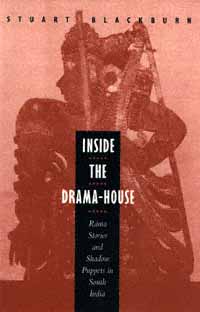 | Title: Inside the drama-house: Rama stories and shadow puppets in South India Author: Blackburn, Stuart H Published: University of California Press, 1996 Subjects: Anthropology | Asian Studies | South Asia | Cinema and Performance Arts | Hinduism Publisher's Description: Stuart Blackburn takes the reader inside a little-known form of shadow puppetry in this captivating work about performing the Tamil version of the Ramayana epic. Blackburn describes the skill and physical stamina of the puppeteers in Kerala state in South India as they perform all night for as many as ten weeks during the festival season. The fact that these performances often take place without an audience forms the starting point for Blackburn's discussion - one which explores not only this important epic tale and its performance, but also the broader theoretical issues of text, interpretation, and audience.Blackburn demonstrates how the performers adapt the narrative and add their own commentary to re-create the story from a folk perspective. At a time when the Rama story is used to mobilize political movements in India, the puppeteers' elaborate recitation and commentary presents this controversial tale from another ethical perspective, one that advocates moral reciprocity and balance.While the study of folk narrative has until now focused on tales, tellers, and tellings, this work explores the importance of audience - absent or otherwise. Blackburn's elegant translations of the most dramatic and pivotal sequences of the story enhance our appreciation of this unique example of performance art. [brief] Matches in book (105): ...Rama Stories and Shadow Puppets in South India... Similar Items...University, of Chicago Press. Census of India 1901. Vol. 20, Cochin , pt. 1,... ...A. 1988. Karnataka Puppetry . Udipi (India): Regional Resources Centre for Folk... |
| 14. | 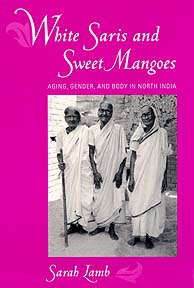 | Title: White saris and sweet mangoes: aging, gender, and body in North India Author: Lamb, Sarah 1960- Published: University of California Press, 2000 Subjects: Anthropology | South Asia | Aging | Cultural Anthropology | Women's Studies Publisher's Description: This rich ethnography explores beliefs and practices surrounding aging in a rural Bengali village. Sarah Lamb focuses on how villagers' visions of aging are tied to the making and unmaking of gendered selves and social relations over a lifetime. Lamb uses a focus on age as a means not only to open up new ways of thinking about South Asian social life, but also to contribute to contemporary theories of gender, the body, and culture, which have been hampered, the book argues, by a static focus on youth. Lamb's own experiences in the village are an integral part of her book and ably convey the cultural particularities of rural Bengali life and Bengali notions of modernity. In exploring ideals of family life and the intricate interrelationships between and within generations, she enables us to understand how people in the village construct, and deconstruct, their lives. At the same time her study extends beyond India to contemporary attitudes about aging in the United States. This accessible and engaging book is about deeply human issues and will appeal not only to specialists in South Asian culture, but to anyone interested in families, aging, gender, religion, and the body. [brief] Matches in book (148): ...Aging, Gender, and Body in North India... Similar Items...and T. M. Dak , eds. 1987. Aging in India: Challenge for the society. Delhi:... ...family care of the aged in village India: A case study. Journal of the Indian... |
| 15. | 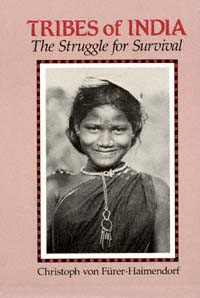 | Title: Tribes of India: the struggle for survival Author: Fürer-Haimendorf, Christoph von 1909- Published: University of California Press, 1982 Subjects: Anthropology | Asian Studies Matches in book (158): ...Tribes of India... Similar Items...12— The Tribal Problem in All-India Perspective... ...Edgar. Castes and Tribes of Southern India. Vol. 2. Madras, 1909. Pp. 453-54.... |
| 16. | 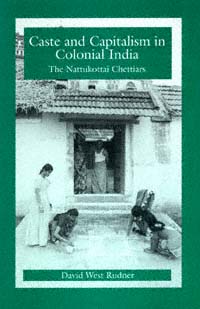 | Title: Caste and capitalism in colonial India: the Nattukottai Chettiars Author: Rudner, David West Published: University of California Press, 1994 Subjects: Anthropology | Cultural Anthropology | South Asia | Asian History Publisher's Description: David Rudner's richly detailed ethnographic and historical analysis of a South Indian merchant-banking caste provides the first comprehensive analysis of the interdependence among Indian business practice, social organization, and religion. Exploring noncapitalist economic formations and the impact of colonial rule on indigenous commercial systems, Rudner argues that caste and commerce are inextricably linked through formal and informal institutions. The practices crucial to the formation and distribution of capital are also a part of this linkage. Rudner challenges the widely held assumptions that all castes are organized either by marriage alliance or status hierarchy and that caste structures are incompatible with the "rational" conduct of business. [brief] Matches in book (347): ...Caste and Capitalism in Colonial India... Similar Items...Seventeenth-Century South India... ...Being a Nakarattar in Colonial India... |
| 17. | 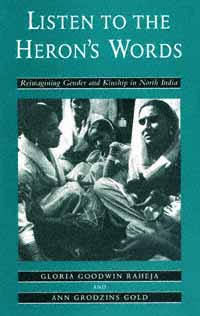 | Title: Listen to the heron's words: reimagining gender and kinship in North India Author: Raheja, Gloria Goodwin 1950- Published: University of California Press, 1994 Subjects: Anthropology | Cultural Anthropology | Folklore and Mythology | Women's Studies | South Asia Publisher's Description: In many South Asian oral traditions, herons are viewed as duplicitous and conniving. These traditions tend also to view women as fragmented identities, dangerously split between virtue and virtuosity, between loyalties to their own families and those of their husbands. In women's songs, however, symbolic herons speak, telling of alternative moral perspectives shaped by women. The heron's words - and women's expressive genres more generally - criticize pervasive North Indian ideologies of gender and kinship that place women in subordinate positions. By inviting readers to "listen to the heron's words," the authors convey this shift in moral perspective and suggest that these spoken truths are compelling and consequential for the women in North India.The songs and narratives bear witness to a provocative cultural dissonance embedded in women's speech. This book reveals the power of these critical commentaries and the fluid and permeable boundaries between spoken words and the lives of ordinary village women. [brief] Matches in book (178): ...Reimagining Gender and Kinship in North India... Similar Items...Preface Listening to Women in Rural North India... ...Culture and the Politics of Gender Representation in India... |
| 18. | 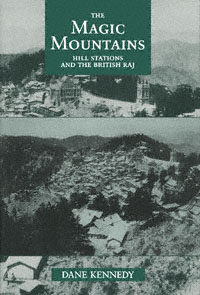 | Title: The magic mountains: hill stations and the British raj Author: Kennedy, Dane Keith Published: University of California Press, 1996 Subjects: History | Asian History | European History | South Asia Publisher's Description: Perched among peaks that loom over heat-shimmering plains, hill stations remain among the most curious monuments to the British colonial presence in India. In this engaging and meticulously researched study, Dane Kennedy explores the development and history of the hill stations of the raj. He shows that these cloud-enshrouded havens were sites of both refuge and surveillance for British expatriates: sanctuaries from the harsh climate as well as an alien culture; artificial environments where colonial rulers could nurture, educate, and reproduce themselves; commanding heights from which orders could be issued with an Olympian authority.Kennedy charts the symbolic and sociopolitical functions of the hill stations over the course of the nineteenth and early twentieth centuries, arguing that these highland communities became much more significant to the British colonial government than mere places for rest and play. Particularly after the revolt of 1857, they became headquarters for colonial political and military authorities. In addition, the hill stations provided employment to countless Indians who worked as porters, merchants, government clerks, domestics, and carpenters.The isolation of British authorities at the hill stations reflected the paradoxical character of the British raj itself, Kennedy argues. While attempting to control its subjects, it remained aloof from Indian society. Ironically, as more Indians were drawn to these mountain areas for work, and later for vacation, the carefully guarded boundaries between the British and their subjects eroded. Kennedy argues that after the turn of the century, the hill stations were increasingly incorporated into the landscape of Indian social and cultural life. [brief] Matches in book (724): Similar Items |
| 19. |  | Title: A flowering tree: and other oral tales from India A.K. Ramanujan ; edited with a preface by Stuart Blackburn and Alan Dundes Author: Ramanujan, A. K 1929- Published: University of California Press, 1997 Subjects: Literature | Fiction | Language and Linguistics | Asian Literature | Folklore and Mythology | South Asia Publisher's Description: This book of oral tales from the south Indian region of Kannada represents the culmination of a lifetime of research by A. K. Ramanujan, one of the most revered scholars and writers of his time. The result of over three decades' labor, this long-awaited collection makes available for the first time a wealth of folktales from a region that has not yet been adequately represented in world literature. Ramanujan's skill as a translator, his graceful writing style, and his profound love and understanding of the subject enrich the tales that he collected, translated, and interpreted.With a written literature recorded from about 800 A.D., Kannada is rich in mythology, devotional and secular poetry, and more recently novels and plays. Ramanujan, born in Mysore in 1929, had an intimate knowledge of the language. In the 1950s, when working as a college lecturer, he began collecting these tales from everyone he could - servants, aunts, schoolteachers, children, carpenters, tailors. In 1970 he began translating and interpreting the tales, a project that absorbed him for the next three decades. When Ramanujan died in 1993, the translations were complete and he had written notes for about half of the tales.With its unsentimental sympathies, its laughter, and its delightfully vivid sense of detail, the collection stands as a significant and moving monument to Ramanujan's memory as a scholar and writer. [brief] Matches in book (53): ...A Flowering Tree And Other Oral Tales from India... Similar Items...Silence Wager. Told widely both in India (fifteen versions recorded so far) and... ...It has been collected in many regions of India (twenty-seven known variants).... |
| 20. | 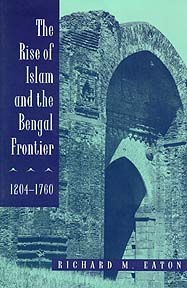 | Title: The rise of Islam and the Bengal frontier, 1204-1760 Author: Eaton, Richard Maxwell Published: University of California Press, 1993 Subjects: History | Asian History | Middle Eastern History | South Asia | Islam Publisher's Description: In all of the South Asian subcontinent, Bengal was the region most receptive to the Islamic faith. This area today is home to the world's second-largest Muslim ethnic population. How and why did such a large Muslim population emerge there? And how does such a religious conversion take place? Richard Eaton uses archaeological evidence, monuments, narrative histories, poetry, and Mughal administrative documents to trace the long historical encounter between Islamic and Indic civilizations.Moving from the year 1204, when Persianized Turks from North India annexed the former Hindu states of the lower Ganges delta, to 1760, when the British East India Company rose to political dominance there, Eaton explores these moving frontiers, focusing especially on agrarian growth and religious change. [brief] Matches in book (352): ...Four Conventional Theories of Islamization in India... Similar Items...imsāl Saiyid mīshavam. Census of India, 1931 , 5, pt. 1, “Bengal and Sikkim” (... ...Hindu Places of Pilgrimage in India (Berkeley and Los Angeles: University of... |